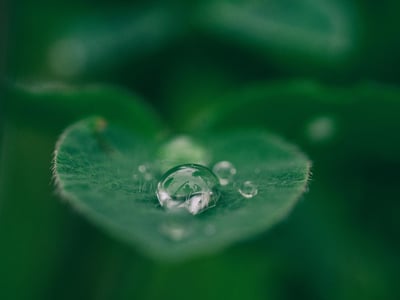Oxycom is best known for its indoor climate solution IntrCooll. This newly developed and patented two-stage evaporative cooling technology uses both direct and indirect evaporative cooling techniques to provide sustainable cooling and ventilation to large (industrial) buildings. This blog describes three of the most significant advantages that two-stage evaporative cooling technology has over traditional air conditioning.
Environmentally friendly
Evaporative cooling, also known as adiabatic cooling, is the world's most environmentally friendly cooling technique. This technique uses water as its refrigerant and thus it has no effect on the ozon layer. Furthermore, as two-stage evaporative cooling uses very little electricity, the systems have a low carbon footprint.
Fun fact: Oxycom's IntrCooll already outperforms the goals set by the Paris Agreement requirements for cooling installations in 2050. The GWP (Global Warming Potential) of the IntrCooll is virtually 0.
Energy-efficient climate control
Oxycom's two-stage evaporative cooling is highly efficient in its energy usage. The IntrCooll system uses only 10% of the energy used by mechanical cooling to effectively cool a building. The natural process of water evaporation provides 95% of the cooling capacity. The motor-driven fan that regulates the evaporative process requires only 1 kWh of electricity and provides up to 40 kWh of cooling power. This stands in great contrast with traditional cooling. Most mechanical systems will produce as little as 3 kWh cooling power with 1 kWh of electricity.
On hot days the cooling efficiency of the IntrCooll system increases. Warmer temperatures allow for more moisture in the air, and thus the system can evaporate more water. And the more water is evaporated, the more cooling power the system can provide without increasing its energy consumption.
Energy Investment Deduction
As evaporative cooling is a proven sustainable cooling technique, systems that use this technology are eligible for the Energy Investment Deduction (EIA) in the Netherlands. This can result in a net benefit of 11% on the entire investment. In other countries, there are also often local subsidies for sustainable techniques, including adiabatic cooling.
Check out how else you can benefit from two-stage evaporative cooling:






